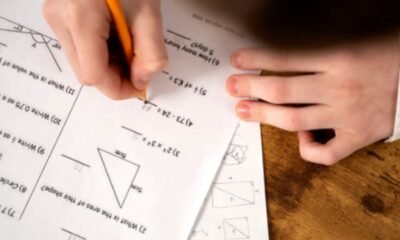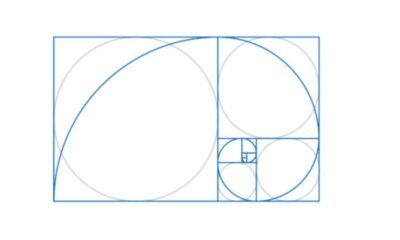EDUCATION
Horizontal Translation: How to Shift Graphs

Shifting graphs horizontally (also known as horizontal translation) is slightly different from vertical translation, but still pretty straight-forward. Perhaps it would be helpful to review my posting on vertical shifts of graphs. Recall from that section: “Picture all the complex stuff that is happening to x as being one chunk of the height component, and then when you add the + 5 to the equation, you are really just adding an additional height chunk to the total height for a given x.” I think this simplification condenses the rest of that post down quite nicely.
Shifting Graphs – Horizontal Translation
Now, to shift a graph horizontally, you include the shift amount with x. So, whatever action was being done just to x before, now you do that same thing to x plus the shift amount. Make sense? Probably not.
Check out the example below that hopefully demonstrates this better than I can explain with words.
If you want to shift the original function of f(x) = x2 + 4 by 3 units, it becomes f(x) = (x-3)2 + 4.
Can you see what I mean by including the shift amount WITH x. The ‘square’ function acts on the entire (x-3) term. This will cause the graph to shift 3 units to the RIGHT. This may seem somewhat counter-intuitive, but it is correct. Subtracting terms from x shift the graph to the right, whereas adding terms to x will translate them to the left.
In this example, x-3 causes a horizontal translation of the graph 3 units right… if it were x+3, it would translate the graph 3 units left. Here is a bit of a trick you can use to help you recall the direction of the shift caused by the signs. It may be easier to remember this by analyzing the “x and shift amount”, letting this small term equal to 0, and then solving for x. The result will show you how many units to move, and in what direction. Like this:
x – 3 = 0
x = 3 (shift 3 units right)
OR
x + 3 = 0
x = (-3) (shift 3 units left)
That shows you how far over, and in what direction, the new x values are! Technically, this is a way of finding a zero of the graph, but that is another post for another day. For now, I think it’s a helpful trick to apply at this stage!
I hope these postings on graph manipulations are helpful. Horizontal translation of functions and their graphs is still quite simple, albeit with the trick with the signs that you don’t have to worry about with vertical translation.
ALSO READ: Using the Quadratic Formula
EDUCATION
Inside GIPS: Fresh Stories from Grand Island Public Schools

Grand Island Public Schools (GIPS) continues to be a dynamic educational district in Nebraska, setting benchmarks in innovation, community involvement, and student achievement. As families, educators, and stakeholders keep a close eye on the evolving academic landscape, GIPS remains committed to shaping the future of learning by fostering inclusive practices, modern curriculum approaches, and student-first policies. These fresh stories from the district offer a closer look at how Grand Island is building a stronger educational foundation through community-driven initiatives, progressive leadership, and student empowerment.
Empowering Students Through Academic Innovation
At the heart of GIPS’s mission is a dedication to academic excellence. The district has embraced project-based learning, personalized education plans, and digital literacy integration to equip students for college, careers, and beyond. With the use of technology-enhanced classrooms and 1:1 Chromebook programs, students are gaining access to real-time resources that allow them to develop critical thinking and digital citizenship skills.
Additionally, curriculum enhancements in STEM (Science, Technology, Engineering, and Mathematics) programs are opening doors for middle and high school students. By encouraging hands-on experimentation and coding in elementary grades, the district aims to build a pipeline of future innovators and engineers.

Diversity, Equity, and Inclusion in Education
Grand Island Public Schools prides itself on serving a diverse student population that reflects the changing demographics of the United States. With over 40 languages spoken among students and families, the district’s multilingual programs, including Dual Language Immersion and English Language Learner (ELL) support, have become essential to student success.
Equity-focused strategies have been embedded into GIPS policies to ensure fair access to education regardless of a student’s background. The district’s cultural liaisons and community engagement specialists work to close achievement gaps, offering tailored support for underrepresented groups and students with special needs. These initiatives align with national priorities for equity in K-12 education and are shaping a more inclusive academic environment.
Teacher Development and Leadership Training
Recognizing that empowered educators lead to empowered students, GIPS has invested significantly in professional development. Teachers across all grade levels participate in ongoing training sessions centered on trauma-informed teaching, social-emotional learning (SEL), and differentiated instruction.
Furthermore, the district has launched leadership academies to groom future principals and instructional coaches from within its ranks. By nurturing talent internally, GIPS maintains continuity in its educational philosophy and strengthens leadership capacity at the school level.
In collaboration with local universities and teacher preparation programs, the district also hosts student-teacher residencies, bridging the gap between theory and practice. This fosters a pipeline of passionate, well-prepared educators ready to meet the unique challenges of 21st-century classrooms.
Extracurriculars and Student Voice
Beyond academics, Grand Island Public Schools has made student engagement a top priority. From award-winning debate teams to thriving arts and theater programs, students have ample opportunities to find their passions and express their creativity.
Athletics remain a cornerstone of school spirit and character-building. GIPS encourages participation in sports not only for physical fitness but also to foster teamwork, perseverance, and discipline. The district’s emphasis on Title IX compliance ensures equal opportunities for all students, regardless of gender or ability.
Student councils and advisory boards across schools give young voices a platform to influence decision-making processes. Whether it’s planning events, promoting anti-bullying campaigns, or suggesting cafeteria menu changes, students play a direct role in shaping their school culture.

Parent Engagement and Community Partnerships
The success of GIPS is strongly tied to the support and collaboration of families and local organizations. Parent-teacher associations (PTAs), booster clubs, and family resource centers provide avenues for parental involvement and two-way communication.
GIPS has also partnered with local businesses and nonprofits to expand opportunities for students, particularly in career and technical education (CTE). Internships, job shadowing, and mentorship programs expose high schoolers to potential career paths and equip them with real-world experience.
Additionally, community health partnerships ensure students have access to mental health services, dental screenings, and nutrition support—demonstrating GIPS’s commitment to the whole-child approach.
Facility Upgrades and Sustainability Goals
Modern learning requires modern spaces, and GIPS has embarked on major capital improvement projects to upgrade facilities across the district. These upgrades include secure entryways, advanced HVAC systems, and energy-efficient lighting.
Green initiatives such as school gardens, recycling programs, and solar energy pilot projects reflect the district’s broader sustainability goals. By involving students in environmental stewardship, GIPS is instilling responsibility and awareness from a young age.
The opening of new early childhood centers and career academies further exemplifies the district’s commitment to preparing students from cradle to career.
Responding to Challenges with Resilience
Like many public school districts, Grand Island Public Schools faced significant challenges during the COVID-19 pandemic. However, the district’s swift transition to remote learning and later, hybrid models, highlighted its adaptability and technological readiness.
GIPS also expanded meal distribution programs, mental health services, and Wi-Fi hotspots to support families during uncertain times. The district’s crisis response plan now serves as a blueprint for resilience and continuity in the face of future disruptions.
With a renewed focus on student attendance, mental health, and learning recovery, GIPS continues to evolve and adapt to ensure no child is left behind.
Looking Ahead: Strategic Goals for the Future
GIPS is not just reacting to present needs—it is planning proactively for the future. The district’s five-year strategic plan emphasizes student-centered learning, equity, family engagement, and operational efficiency.
Future goals include expanding dual-credit college courses, increasing high school graduation rates, and enhancing special education programming. GIPS is also exploring AI-driven personalized learning tools to tailor instruction and assessments based on individual learning styles and progress.
Community input continues to shape the district’s priorities, with school board meetings and town halls serving as key forums for collaboration.
Frequently Asked Questions (FAQs)
Q1: What makes Grand Island Public Schools different from other districts in Nebraska?
GIPS stands out for its diversity, equity-focused programs, strong community partnerships, and innovative curriculum that includes personalized learning and robust STEM education.
Q2: How does GIPS support English Language Learners?
The district offers tailored support such as Dual Language Immersion programs, ESL instruction, and cultural liaison services to ensure language is not a barrier to academic success.
Q3: Are there opportunities for students to gain real-world experience?
Yes, GIPS partners with local businesses to provide internships, job shadowing, and career mentoring through its Career Pathways and CTE programs.
Q4: How can parents get involved in GIPS schools?
Parents can participate in PTAs, attend school board meetings, volunteer in classrooms, and engage through digital platforms like parent portals and newsletters.
Q5: What kind of support is available for students’ mental health?
GIPS offers counseling services, peer support programs, and collaborates with health organizations to provide accessible mental health resources for students and families.
Conclusion
Inside GIPS: Fresh Stories from Grand Island Public Schools highlights a district that is deeply committed to nurturing every student’s potential through innovation, inclusivity, and partnership. As Grand Island continues to evolve in response to educational trends and community needs, its schools remain a vital part of the city’s heartbeat—where the future is being built one student at a time. Whether through academic growth, cultural celebration, or future-focused planning, GIPS exemplifies what it means to be a forward-thinking public school system.
EDUCATION
The Meaning of an Open Circle in Math Explained

Introduction: Visual Symbols with Logical Impact
The Meaning of an Open In mathematics, visual elements often carry powerful meaning, and one such example is the open circle in math. This small, seemingly simple symbol plays a crucial role in representing concepts like inequality, domain restrictions, and function discontinuities. Most often used on number lines or coordinate graphs, the open circle acts as a clear visual cue to indicate the exclusion of a particular value. Though easy to overlook, understanding this symbol is key to mastering graphing techniques and mathematical logic, especially in algebra, precalculus, and even calculus.

Understanding the Open Circle: A Marker of Exclusion
An open circle typically appears on a number line or in a graph of a function to represent a value that is not included in the solution set. In mathematical terms, it marks a boundary point that is excluded from the interval or inequality being described.
For example, when graphing the inequality x<3x < 3x<3, an open circle is placed at 3 on the number line, followed by a shaded region extending to the left. The open circle communicates that 3 is not part of the solution, aligning with the inequality symbol “less than,” which excludes the boundary.
This method of graphical representation helps differentiate between inclusive and exclusive intervals, offering a quick and intuitive understanding for both students and professionals.
Graphing Inequalities: The Open Circle in Action
One of the most common uses of open circles is in the context of graphing inequalities. When plotting expressions involving symbols like “<” or “>”, the open circle marks the point that is approached but not included in the solution.
Let’s consider a few practical examples:
- For x>2x > 2x>2, the number line will feature an open circle at 2, with the line extending to the right.
- For x<−1x < -1x<−1, an open circle appears at -1, and the shaded line extends to the left.
This is in direct contrast to inequalities using “≤” or “≥”, where closed circles (or filled dots) are used to show that the value is included in the solution.
This visual distinction is essential when interpreting domain and range in functions, especially in piecewise-defined functions, where a function may change behavior at a specific point that is either included or excluded.
Open Circles in Piecewise Functions and Graph Discontinuity
In piecewise functions, open circles play a key role in identifying points where the function definition changes. A function might be defined one way for values less than a particular point and another way for values greater than or equal to that point. To make this distinction visually clear, an open circle is used where the function is undefined or not applicable.
For instance: f(x)={x2if x<13x+2if x≥1f(x) = \begin{cases} x^2 & \text{if } x < 1 \\ 3x + 2 & \text{if } x \geq 1 \end{cases}f(x)={x23x+2if x<1if x≥1
When graphed, the function would feature an open circle at x=1x = 1x=1 on the curve x2x^2×2, and a filled circle at the same point on the line 3x+23x + 23x+2. This tells the viewer that the point (1,1)(1,1)(1,1) on the curve is not included in the graph, while the point on the line is.
Such usage is vital in identifying discontinuities in functions—places where the graph “jumps” or is not connected. It also aids in evaluating limits and understanding whether a function approaches a value from the left or right without necessarily reaching it.
Interval Notation and the Open Circle
Understanding open circles also helps interpret and write interval notation, a compact way to express ranges of values. In this notation:
- An open interval such as (2,5)(2, 5)(2,5) excludes the endpoints, meaning both 2 and 5 are not part of the set. On a graph, this would be shown with open circles at both 2 and 5.
- A closed interval like [2,5][2, 5][2,5] includes both endpoints and would be depicted with closed circles.
- A half-open interval (e.g., [2,5)[2, 5)[2,5)) would combine both types of circles.
This style of notation is essential in higher-level math, particularly when dealing with domains of rational functions, limits, and integration in calculus.
Avoiding Common Mistakes with Open Circles
Students new to graphing often confuse open and closed circles, especially when translating between inequality symbols and their visual representations. One frequent mistake is using a closed circle for “<” or “>” inequalities, which falsely includes a boundary point that should be excluded.
Another common error occurs in piecewise functions, where forgetting to show the open or closed nature of a point can lead to misinterpretation of whether the function is defined at that specific value.
To avoid such pitfalls, it’s essential to remember:
- Open circle = exclusion = use with “<” or “>”
- Closed circle = inclusion = use with “≤” or “≥”
Mastering this visual shorthand ensures accurate mathematical communication and enhances overall logical reasoning in problem-solving.
Real-Life Analogies and Applications
Though primarily a mathematical tool, the concept of inclusion and exclusion marked by circles finds its parallels in real life. Imagine a speed limit sign that says “Speed must be under 60 mph.” This is similar to x<60x < 60x<60, where 60 is not an acceptable value—just like a point marked with an open circle.
In fields like computer science, economics, and engineering, clear distinctions between included and excluded values are necessary when defining constraints or boundary conditions. Whether setting thresholds, defining limits in algorithms, or modeling behavior, the logic of open circles underpins real-world applications.

Frequently Asked Questions (FAQs)
1. What does an open circle mean in math?
An open circle indicates that a specific value is not included in the solution set or function definition. It often appears on a graph to mark an excluded boundary point in inequalities or piecewise functions.
2. When should I use an open circle versus a closed circle?
Use an open circle with “less than” (<) or “greater than” (>) inequalities. Use a closed circle with “less than or equal to” (≤) or “greater than or equal to” (≥) to show inclusion.
3. Is an open circle included in the answer?
No, an open circle means the value it marks is not included in the solution set.
4. What is the difference between an open interval and a closed interval?
An open interval excludes its endpoints, shown using parentheses ( ), while a closed interval includes its endpoints, shown using brackets [ ].
5. How do open circles appear in function graphs?
In function graphs, open circles show that a point is not part of the function—usually due to a discontinuity or domain restriction. It’s a visual signal that helps readers understand where the function is not defined or does not pass through.
Conclusion: The Power of a Simple Symbol
The open circle may seem like a minor detail in the grand landscape of mathematics, but its role is fundamental. It bridges symbolic logic with visual understanding, clearly showing when values are excluded from sets, domains, or equations.
EDUCATION
Mastering Math: A Quick Guide to All Key Properties

The Role of Properties in Mathematics
Mathematical properties provide consistency. Without them, solving even basic expressions would feel like guesswork. Whether you’re working with integers, decimals, fractions, or algebraic expressions, these rules apply universally—ensuring results are predictable. These properties begin appearing in elementary math education and continue to play a major role in more advanced subjects like algebra, calculus, and number theory.
Commutative Property: Order Doesn’t Matter
The commutative property states that the order in which two numbers are added or multiplied does not affect the result. For example, 3 + 5 equals 8, and so does 5 + 3. This property holds true for both addition and multiplication, but it doesn’t apply to subtraction or division. If you reverse the numbers in a subtraction problem (e.g., 5 – 3 vs. 3 – 5), you’ll get a different result. This subtle yet significant distinction highlights the limits of certain properties.

Associative Property: Grouping Without Changing the Result
Closely related to the commutative law is the associative property, which concerns grouping. Whether you group (2 + 3) + 4 or 2 + (3 + 4), the total remains 9. This grouping consistency is powerful when dealing with multiple terms in addition or multiplication. Like the commutative rule, the associative property does not extend to subtraction and division due to their directional nature.
In algebra, this property allows expressions to be rewritten and regrouped to simplify solving. When you encounter expressions like (a + b) + c, the associative law reassures you that shifting the parentheses won’t alter the outcome.
Distributive Property: Bridging Addition and Multiplication
The distributive property is unique because it connects two operations—multiplication and addition (or subtraction). It allows you to multiply a single term across terms inside parentheses. For example, 3 × (4 + 2) becomes (3 × 4) + (3 × 2). This property is a cornerstone of algebraic simplification and helps break down complex expressions into manageable components.
When working with variables, the distributive property becomes essential. Solving equations often starts with “distributing” a multiplier across parentheses, making it easier to isolate and solve for unknowns. In classrooms, this is often one of the first tools introduced to teach algebraic reasoning.
Identity Properties: Neutral Elements in Math
Every mathematical operation has a neutral element—called an identity—that doesn’t affect the result when used. For addition, the identity is zero. Adding zero to any number yields the same number. For multiplication, the identity is one, since multiplying any number by one does not change its value.
These identity properties are particularly important in algebra and higher-level mathematics, as they allow mathematicians to maintain balance in equations. Understanding these “do-nothing” elements helps students avoid unnecessary complications when simplifying expressions.
Inverse Properties: Undoing the Operation
Inverse properties are the mathematical equivalent of “reversing” an action. For addition, the inverse of a number is its negative. So, the additive inverse of 5 is -5, and when added together, they result in the identity (zero). For multiplication, the multiplicative inverse is the reciprocal. For instance, the inverse of 4 is ¼, because 4 × ¼ = 1.
These concepts are foundational to solving equations. If you’re trying to isolate a variable, you often use the inverse operation to “cancel out” a number. For instance, subtracting both sides by a value (additive inverse) or dividing both sides (multiplicative inverse) simplifies the equation while maintaining equality.

Closure Property: Staying Within the System
The closure property refers to staying within the same set of numbers when performing operations. For example, the set of whole numbers is closed under addition—adding two whole numbers will always result in another whole number. However, that same set is not closed under subtraction (7 – 10 = -3, which isn’t a whole number).
Understanding closure helps when exploring different number systems like integers, rational numbers, and irrational numbers. This is particularly important in algebraic structures such as groups, rings, and fields, where closure is a defining feature.
Real-Life Applications and Relevance
These properties aren’t just for textbook exercises—they show up in everyday life. When calculating tips at a restaurant, rearranging a grocery bill, estimating time, or working with measurements, we unconsciously apply these properties. For engineers, data scientists, and economists, these laws are essential to building algorithms, modeling systems, or analyzing financial data.
Moreover, understanding properties allows for mental flexibility in problem-solving. It makes solving complex problems more intuitive and less mechanical, especially when you can simplify terms or spot patterns by applying these foundational rules.
FAQs: Common Questions About Math Properties
Q1: What are the five main properties in math?
The key properties include the commutative, associative, distributive, identity, and inverse properties. Each plays a specific role in arithmetic and algebra.
Q2: Do these properties apply to all number types?
Most properties apply to integers, rational numbers, and real numbers. However, some properties (like closure) vary depending on the number system being used.
Q3: Why doesn’t subtraction follow the commutative property?
Because changing the order in subtraction changes the result. 5 – 3 ≠ 3 – 5, so the property does not hold.
Q4: What is the importance of the distributive property in algebra?
It allows us to expand expressions, making it easier to solve equations or simplify terms. It’s essential in factoring and simplifying algebraic expressions.
Q5: What’s the difference between identity and inverse properties?
The identity property involves neutral numbers (like 0 or 1) that don’t change the value. The inverse property involves numbers that “cancel out” the original value (like adding a negative or multiplying by a reciprocal).
Conclusion
Understanding math properties is like having a map for navigating numbers. With tools like the commutative, associative, distributive, identity, inverse, and closure properties, students and professionals alike can tackle problems more confidently and accurately.
-

 TECH3 weeks ago
TECH3 weeks agoApple iPhone 17: Official 2025 Release Date Revealed
-

 EDUCATION3 weeks ago
EDUCATION3 weeks agoUsing the Quadratic Formula
-

 TECH3 weeks ago
TECH3 weeks agoMyWape: Your Portal to Seamless Digital Access
-

 BLOG3 weeks ago
BLOG3 weeks agoUnderstanding the ∴ Symbol in Math
-

 HEALTH3 weeks ago
HEALTH3 weeks agoGoodNever: Wellness, Simplified
-

 EDUCATION3 weeks ago
EDUCATION3 weeks agoWhy Does m Represent Slope?
-

 EDUCATION3 weeks ago
EDUCATION3 weeks agoTrigonometry – Secant, Cosecant, Cotangent
-

 EDUCATION3 weeks ago
EDUCATION3 weeks agoHow to Solve Quadratic Equations 2
